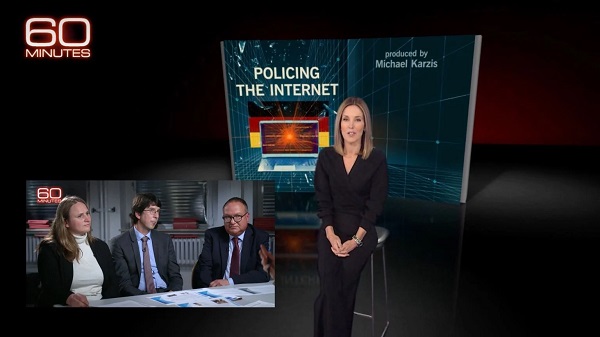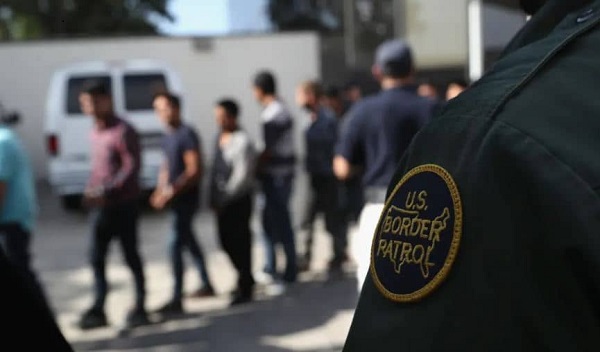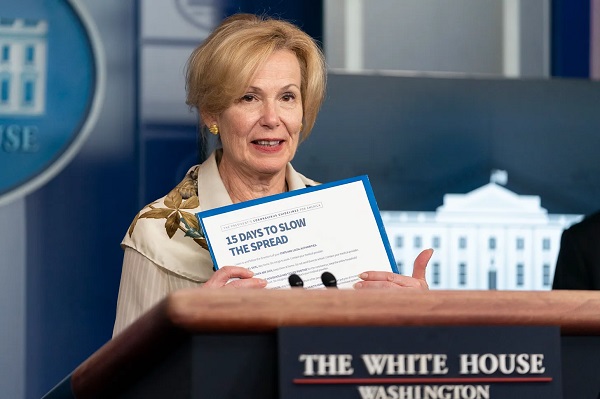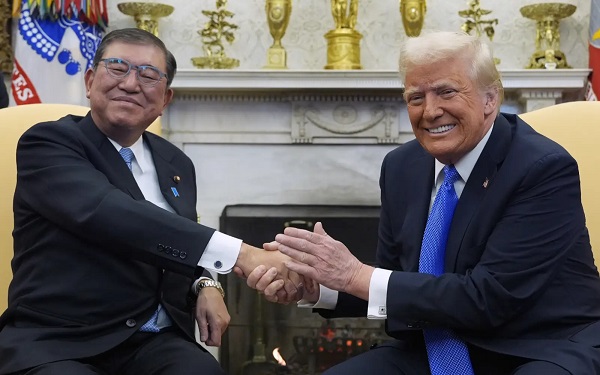conflict
Why the financial theft of the Ukraine war may finally be coming to an end
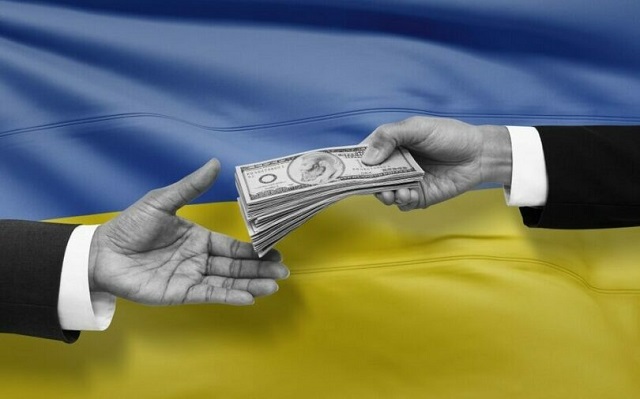
From LifeSiteNews
Ukraine has suffered so many losses that military conscription law has been altered to allow women to be called in to service.
STORY AT-A-GLANCE
- For years, Ukraine was recognized as one of the most, if not “the” most, corrupt nation in Europe. The country is now struggling to rein in corruption as that is becoming a key hurdle to obtain more financial support.
- According to official aid trackers, the U.S. had sent $76.8 billion in military, financial, and humanitarian aid to Ukraine as of the end of July 2023. The European Union contributed another $85.1 billion in that same timeframe. In mid-October 2023, Biden proposed yet another $105 billion foreign aid package, $61 billion of which will go to Ukraine.
- According to U.S. officials, at least 70,000 of Ukraine’s 500,000 troops had been killed by mid-August 2023, and another 100,000 to 120,000 wounded. Another 9,614 Ukrainian civilians had also been killed as of September 10, 2023.
- The supply of cannon fodder is running so low that Ukraine recently updated its conscription law to include women. Women between the ages of 18 and 60 with medical backgrounds must register for military service as of October 1, 2023.
- Corruption may be a primary driver of this war. The American public being robbed and Ukraine drained of its youths while a relatively small number of corrupt individuals stuff their pockets with cash. American and European taxpayers are paying for the destruction of Ukraine and the elimination of huge numbers of its inhabitants, so that technocrat globalists and central bankers can then profit from the privatization and rebuilding of Ukraine into a “smart country” model for the rest of the world.
(Mercola) — For years, Ukraine was recognized as one of the most, if not “the” most, corrupt nation in Europe. It held on to that reputation all the way up to the day Russia invaded in late February 2022, at which point media worldwide suddenly started rewriting history.
As noted by Ted Galen Carpenter, a senior fellow for defense and foreign policy studies at the Cato Institute, in a sober and clear-eyed article, published in April 2022:
Statements from U.S. and other Western officials, as well as pervasive accounts in the news media, have created a stunningly misleading image of Ukraine. There has been a concerted effort to portray the country… as a plucky and noble bulwark of freedom and democracy…
The notion that Ukraine was such an appealing democratic model in Eastern Europe that the country’s mere existence terrified Putin… is a myth… Even before the war erupted, there were ugly examples of authoritarianism in Ukraine’s political governance …
The neo-Nazi Azov Battalion was an integral part of President Petro Poroshenko’s military and security apparatus, and it has retained that role during Zelensky’s presidency…
The country is not a symbol of freedom and liberal democracy, and the war is not an existential struggle between democracy and authoritarianism. At best, Ukraine is a corrupt, quasi‐democratic entity with troubling repressive policies.
Given that sobering reality, calls for Americans to ‘stand with Ukraine’ are misplaced. Preserving Ukraine’s independence and territorial integrity most certainly are not worth the United States risking war with a nuclear-armed Russia.
Indeed, while President Joe Biden kept sending tens of billions of American taxpayer dollars to Ukraine in the name of “defending democracy,” Zelensky banned all opposition parties in the country and blacklisted American politicians and journalists who questioned the U.S. involvement in the conflict. So much for democracy and democratic values.
Is Ukraine aid part of a money laundering scheme?
According to the Panama Papers released in 2016, which have been described as “a giant leak of more than 11.5 million financial and legal records [which] exposes a system that enables crime, corruption and wrongdoing,” Zelensky is likely just as corrupt as his predecessors, as he, his wife and several associates all own “hidden offshore assets.”
With that in mind, why is the U.S. sending billions of dollars to Ukraine without requiring any kind of accounting for where all this money is going? According to official aid trackers, the U.S. had sent $76.8 billion in military, financial, and humanitarian aid to Ukraine as of the end of July 2023.
The European Union contributed another $85.1 billion in that same timeframe. And, in mid-October 2023, Biden proposed yet another $105 billion foreign aid package, $61 billion of which will go to Ukraine.
The lack of oversight combined with the lack of Ukrainian progress in the conflict and the refusal to enter into peace negotiations raises suspicions that these aid packages may simply be another money laundering scheme like we saw with FTX. At least $178 million sent to Ukraine through the now-defunct FTX crypto exchange may have been laundered back to the Democratic Party in the U.S.
Ukraine still rife with corruption
Lately, mainstream media have started to revisit the issue of corruption in Ukraine, probably because public perception of corruption may undermine the entire operation.
For example, October 2, 2023, Politico reported receiving a “sensitive but unclassified” strategy paper in which Biden administration officials warn that “Perceptions of high-level corruption” could “undermine the Ukrainian public’s and foreign leaders’ confidence in the war-time government.” According to Politico:
The administration wants to press Ukraine to cut graft… But being too loud about the issue could embolden opponents of U.S. aid to Ukraine, many of them Republican lawmakers who are trying to block such assistance. Any perception of weakened American support for Kyiv also could cause more European countries to think twice about their role.
Ukrainian graft has long been a concern of U.S. officials… But the topic was deemphasized in the wake of Russia’s February 2022 full-scale invasion…
More than a year into the full-scale war, U.S. officials are pressing the matter more in public and private. National security adviser Jake Sullivan, for instance, met in early September with a delegation from Ukrainian anti-corruption institutions.
A second U.S. official familiar with the discussions confirmed to POLITICO reports that the Biden administration is talking to Ukrainian leaders about potentially conditioning future economic aid on ‘reforms to tackle corruption and make Ukraine a more attractive place for private investment.’
No such conditions have been proposed for military aid, however, which makes up the bulk of the money spent on Ukraine. Similarly, in mid-September 2023, Reuters reported that “billions of dollars of aid earmarked for Zelensky’s government as well as ambitions to join the European Union ride on Ukraine proving that it is serious about fighting corruption and embracing good governance.”
Zelensky, for his part, has increasingly tried to portray himself as a staunch corruption fighter, firing more than a dozen senior officials on corruption charges in January 2023.
In August he also fired all the heads of the draft offices across the country, after it became known that men were bribing their way out of military service by paying for medical exemptions. In September he also fired his minister of defense over allegations of corruption within the ministry. A Ukrainian Supreme Court justice was also arrested this past summer for taking bribes.
Yet, such mass firings and arrests of high-level individuals have done little to quell rumors and accusations that Zelensky still tolerates corruption within his inner circle, perhaps because it’s true. According to a top adviser to Zelensky, who spoke to a Time journalist off the record, “People are stealing like there’s no tomorrow.”
An expensive, unwinnable war
In a September 2023 meeting with U.S. senators, Zelensky pleaded for more funds saying “You’re giving money. We’re giving our lives.” Indeed, according to U.S. officials, at least 70,000 of Ukraine’s 500,000 troops had been killed by mid-August 2023, and another 100,000 to 120,000 wounded.
Another 9,614 Ukrainian civilians had also been killed as of September 10, 2023. So many Ukrainian youths have been thrown into the meat grinder that the average age of Ukrainian soldiers is now 43. Men up to the age of 60 face the risk of being drafted at any time.
The supply of cannon fodder is running so low that Ukraine recently updated its conscription law to include women. Women between the ages of 18 and 60 with medical backgrounds, including doctors, nurses, midwives, dentists and pharmacists, must register for military service as of October 1, 2023.
However, unlike their male counterparts, women are not barred from leaving the country unless they’re called in for active duty. Ukraine is also trying to get as many Ukrainians back from other countries as well. To that end, Norway recently announced it will pay EUR 1,500 in cash to any Ukrainian willing to go home.
Yet despite the enormous sums of money being poured into Ukraine, the weapons sent, the conscription of women and aged civilians, Ukraine is making no headway and have no conceivable way of winning. Even some of Zelensky’s closest aides are now saying he’s “deluding himself” thinking he can still somehow win.
NATO countries are running out of ammunition and warn of shortages, while Russia has ramped up its military hardware production more than tenfold. And, even if we continue to supply the weapons, Ukraine is running out of able-bodied fighters to use them.
Preplanned post-war profiteering
In the final analysis, one wonders whether corruption might actually be a primary driver of this war. Is the American public being robbed and Ukraine drained of its youths while a relatively small number of corrupt individuals stuff their pockets with cash?
It looks that way, especially in light of the news that BlackRock, which already owns most of the private assets in the world, is positioning itself to profit from a post-war Ukraine. As reported by Business Today in early May 2023:
President of Ukraine, Volodymyr Zelensky, recently met with the management team of BlackRock, the world’s largest asset management company, to discuss the creation of an investment fund aimed at restoring the country’s economy through public and private capital. Netzines have not taken well to the news with many criticizing Zelensky over the meeting.
A Twitter user said, ‘Taxpayers pay the war bills, private firms get the profits.’ ‘Ukraine being privatized and sold off to companies like Blackrock,’ another said.
According to the press service of the Office of the President, the parties discussed the details of the investment fund’s creation and implementation of large-scale business projects in Ukraine.
The U.S. is also keen on Ukraine privatizing its banks, which will open the door for central bankers to take over. And let’s not forget that the big picture plan for Ukraine’s post-war reconstruction is to turn the whole country into smart cities with “smart governments” run by artificial intelligence.
It’s also a testing ground for warfare-related AI technologies said to be “paving the way for AI warfare in the future,” although it doesn’t appear to provide them with much advantage at the moment.
In short, it appears American and European taxpayers are paying for the destruction of Ukraine and the elimination of huge numbers of its inhabitants, so that technocrat globalists and central bankers can then profit from the privatization and rebuilding of Ukraine into a “smart country” model for the rest of the world.
Reprinted with permission from Mercola.
Note from LifeSiteNews co-founder Steve Jalsevac: Cost, death, and injury estimates quoted from U.S. government sources in this article are not reliable since the Biden administration cannot fully admit the political disaster of their proxy war using Russia to bring about regime change in Russia, break up the world’s largest nation, and take control of its vast natural resources. Many alternative news sources have indicated Ukrainian deaths to be far higher, up to possibly 400-500,000, and U.S. and EU financial costs to also be far higher than admitted.
No one knows the real costs because audits of U.S. military expenses have proven to be impossible, Ukraine is the most corrupt, money-laundering European nation, and there are additional, multi-billion-dollar intelligence gathering/CIA costs related to the conflict never provided to the public. The conflict has also cost the West massive direct and indirect expenses, such as devastating economic fallout from the U.S.-directed blowing up of the Nord Stream pipelines for which a current U.S. propaganda campaign is attempting to assign blame for that disaster on Ukraine operatives as the U.S. is engaging in a withdrawal of support for the failed war.
As well, the unprecedented level of failed Western sanctions against Russia have backfired on the West with the EU suffering the most to the tune of many billions of dollars and to an extent that is threatening the economic stability of the EU. Many other, especially poor developing nations, have also greatly suffered from the war and sanctions. Ukraine/NATO destruction of Russia’s main ammonia pipeline has deprived those nations of critically needed fertilizer and advanced the globalist ‘climate change’ campaign against fertilizer use.
The war, sanctions, and disastrous U.S./NATO killing of the very reasonable diplomatic peace settlement agreed to between Ukraine and Russia in March 2022, have resulted in far more harm to Ukraine and the West than to Russia. The formerly communist nation has astonishingly managed to benefit in many ways from having to resist NATO actions against it related to the conflict.
Russia has astonishingly maintained a healthy economy and gained numerous new nation-state allies representing a majority of the world’s population because of this terrible war conspiracy to increase Western economic hegemony and force the globalist UN/WEF/ Blackrock/Vanguard/State Street/Great Reset/New World Order agenda. LifeSiteNews, from the very beginning of the conflict, sensed this agenda and has been strongly encouraging peace negotiations in order to save Ukrainian lives.
We have never supported the Russian Special Military Operation. However, we have acknowledged that Russia has legitimate fears over broken U.S. promises related to the constant, unnecessary expansion of NATO along its borders. And there has been understandable, grave Russian concern over the horrific shelling and unprovoked killing of 14,000 Russian-speaking Ukrainian civilians by the Ukraine military since the U.S.-assisted violent, Ukraine regime change coup in 2014. We are simply uncompromisingly pro-life, pro-peace, and anti-globalist tyranny.
armed forces
SecDef Hegseth picks investigators to examine botched Afghanistan withdrawal
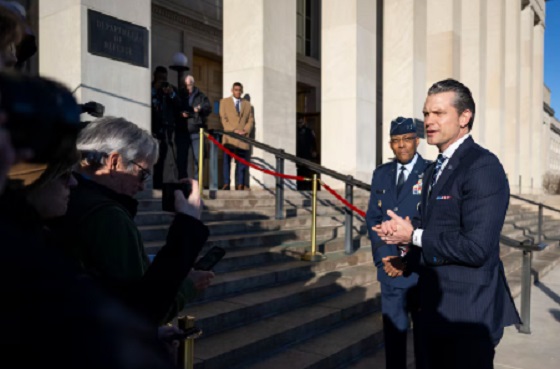
 MxM News
MxM News
Quick Hit:
Defense Secretary Pete Hegseth has initiated an investigation into the Biden administration’s botched Afghanistan withdrawal. Hegseth confirmed that investigators have already been selected to examine the disastrous exit, which left 13 U.S. service members dead and stranded Americans behind. He emphasized that accountability is forthcoming and vowed a thorough review to uncover the decision-making failures behind the debacle.
Key Details:
- Hegseth told Breitbart News that he has already chosen investigators for a full Pentagon-led review of the withdrawal.
- The Biden administration’s 2021 exit resulted in the deaths of 13 U.S. service members, abandoned American citizens, and a botched drone strike that killed an Afghan aid worker and his family.
- No officials were held accountable, while Marine Col. Stuart Scheller, who publicly called for accountability, was the only one punished—he now serves in the Trump administration.
Diving Deeper:
Hegseth, in an exclusive interview, stated that the investigation would be comprehensive, focusing on key decision-making failures that led to one of the most disastrous military withdrawals in U.S. history. While no specific timeline was provided, he stressed the importance of getting the facts right.
The 2021 Afghanistan withdrawal, executed under then-President Joe Biden, resulted in a chaotic evacuation at Kabul International Airport. The suicide bombing at Abbey Gate claimed the lives of 13 American troops, while the administration abandoned hundreds of U.S. citizens despite claiming success. Additionally, the U.S. military, in a hasty attempt to prevent another attack, launched a drone strike that mistakenly killed an innocent Afghan aid worker and his family. At the time, then-Joint Chiefs Chairman Mark Milley defended the strike as “righteous.”
Despite these failures, no senior officials were removed from their posts. The only individual who faced consequences was Marine Col. Stuart Scheller, who was discharged after demanding accountability in a viral video. Now, he serves as a senior adviser to the Defense Under Secretary for Personnel and Readiness under the 47th President, Donald Trump.
Hegseth reaffirmed his commitment to ensuring accountability, emphasizing the need to establish a factual timeline of events, decisions, and their consequences. “I don’t think there’s anybody that feels like there’s been an honest accounting of what happened in Afghanistan. That’s our job,” he said.
The investigation, he added, will be critical to rebuilding trust within the Defense Department. “We’re going to drive that full investigation and get a sense of what happened. Accountability will be coming,” Hegseth concluded.
conflict
Senior U.S. officials meet with Russians in Saudi Arabia to normalize relations, end Ukraine war
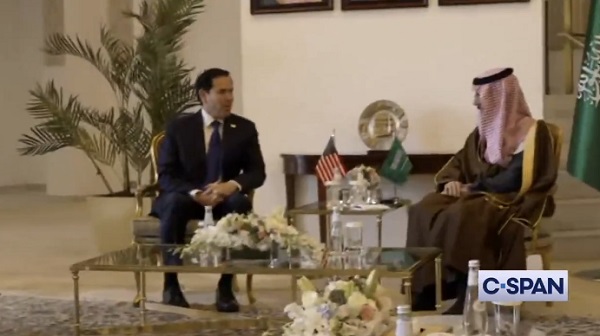
 MxM News
MxM News
Quick Hit:
Senior U.S. officials met with Russian counterparts in Saudi Arabia for the most extensive discussions between the two nations in years. The Trump administration is pushing for an end to the Ukraine war and the normalization of relations, with economic and energy cooperation also on the agenda.
Key Details:
- U.S. officials, including Secretary of State Marco Rubio and National Security Adviser Michael Waltz, met with Russian Foreign Minister Sergey Lavrov in Riyadh.
- Russian officials are seeking to restore economic ties, including potential returns of American oil companies to Russia.
- Ukraine and European allies are concerned that President Trump could broker a peace deal favoring Russia without consulting Kyiv.
Diving Deeper:
Senior U.S. and Russian officials gathered in Riyadh, Saudi Arabia, for high-level discussions aimed at ending the war in Ukraine and exploring ways to rebuild diplomatic and economic ties. The meeting marks the most significant engagement between the two nations in at least three years and follows a recent phone call between President Trump and Russian President Vladimir Putin, during which both leaders emphasized the benefits of renewed cooperation.
Leading the U.S. delegation were Secretary of State Marco Rubio, National Security Adviser Michael Waltz, and Middle East Envoy Steve Witkoff. Their Russian counterparts included Foreign Minister Sergey Lavrov, foreign policy adviser Yuri Ushakov, and Kirill Dmitriev, head of Russia’s sovereign wealth fund. Discussions centered on peace negotiations in Ukraine and the possibility of American oil companies re-entering the Russian market.
Dmitriev emphasized the economic advantages of resuming business relations with the U.S., noting that American companies had lost an estimated $300 billion due to sanctions and business withdrawals following Russia’s 2022 invasion of Ukraine. He argued that restoring these ties could be mutually beneficial, citing President Trump’s focus on economic success and pragmatic deal-making.
The meeting has sparked concern among European allies and Ukraine, who worry that Trump may push for a settlement favoring Moscow. Ukrainian President Volodymyr Zelensky, also in the Gulf region for diplomatic efforts, reaffirmed that Ukraine would reject any peace deal negotiated without its direct involvement.
Despite skepticism from the West, the Trump administration maintains that engagement with Russia is necessary to end the conflict and normalize relations. “If there is going to be the possibility of progress here towards peace, we are going to need to talk to the Russians,” Rubio stated on CBS’s Face the Nation prior to the talks.
Saudi Arabia, which has maintained a neutral stance in the Ukraine conflict, played host to the discussions as part of its broader ambition to position itself as a global diplomatic leader. The Kingdom’s Foreign Ministry emphasized its commitment to fostering peace and security through international dialogue.
-

 COVID-192 days ago
COVID-192 days agoRed Deer Freedom Convoy protestor Pat King given 3 months of house arrest
-
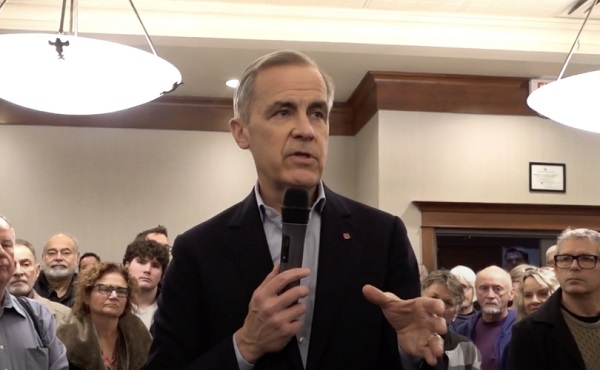
 Carbon Tax2 days ago
Carbon Tax2 days agoMark Carney has history of supporting CBDCs, endorsed Freedom Convoy crackdown
-

 Censorship Industrial Complex1 day ago
Censorship Industrial Complex1 day agoBipartisan US Coalition Finally Tells Europe, and the FBI, to Shove It
-
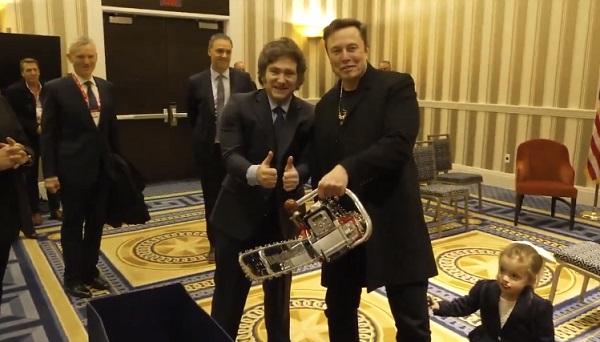
 Business1 day ago
Business1 day agoArgentina’s Javier Milei gives Elon Musk chainsaw
-
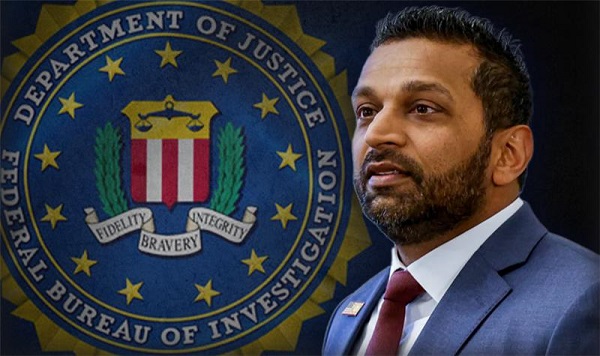
 International2 days ago
International2 days agoSenate votes to confirm Kash Patel as Trump’s FBI director
-
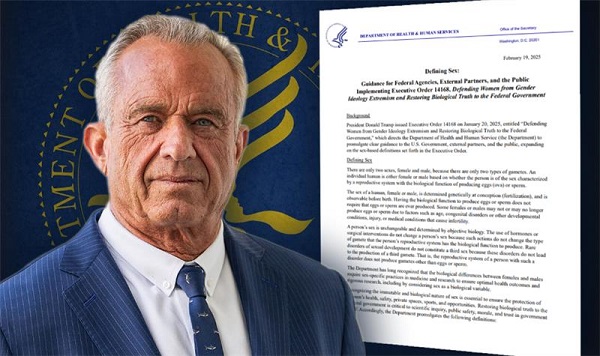
 Health2 days ago
Health2 days agoTrump HHS officially declares only two sexes: ‘Back to science and common sense’
-

 Business2 days ago
Business2 days agoGovernment debt burden increasing across Canada
-
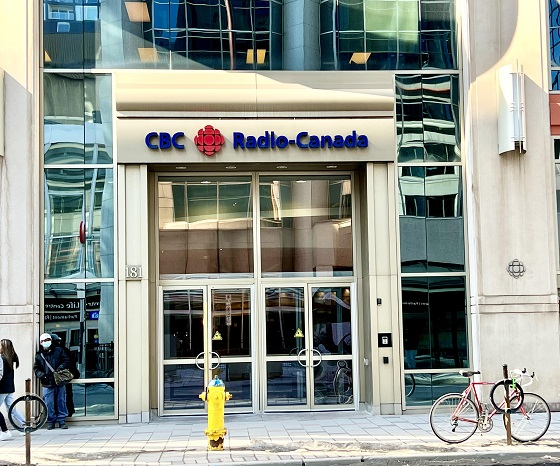
 Business1 day ago
Business1 day agoFederal Heritage Minister recommends nearly doubling CBC funding and reducing accountability


